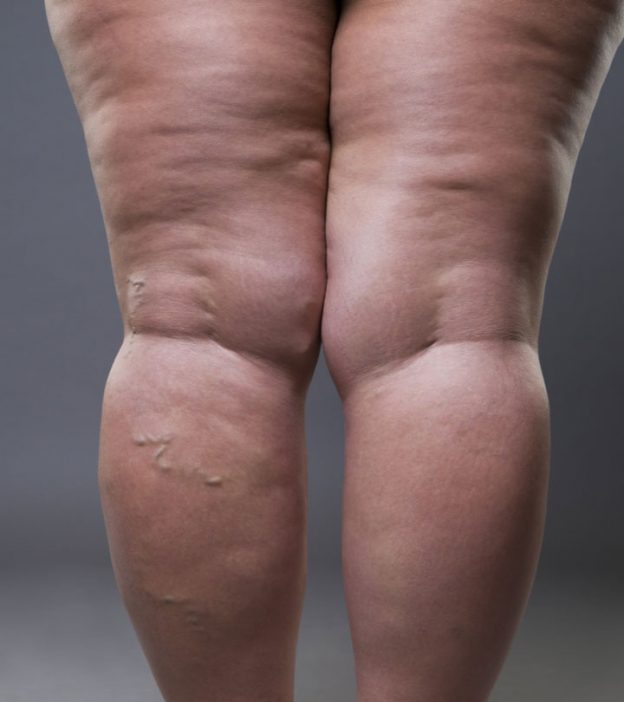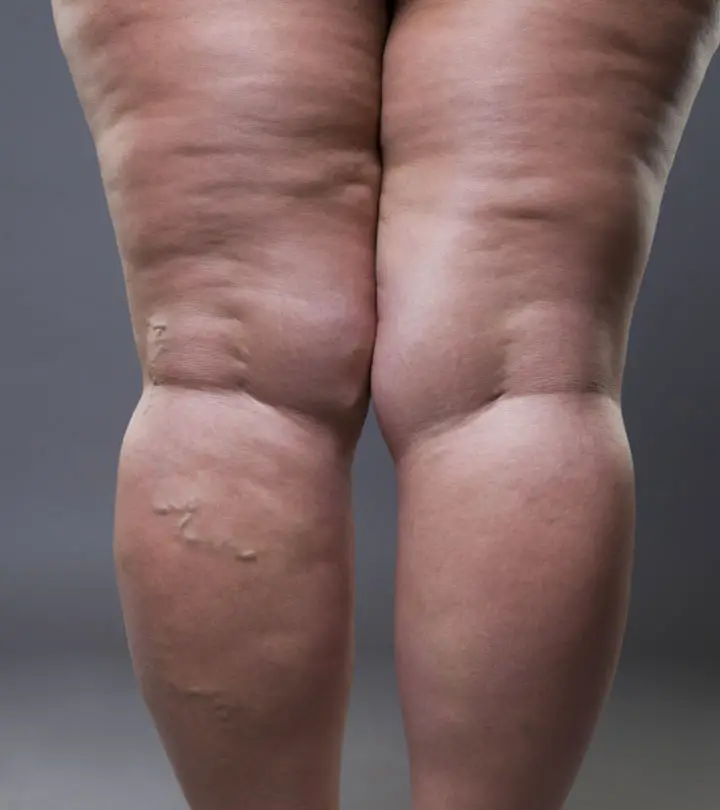The lipedema diet, exercise, and what to eat offer six health benefits: reduced inflammation, improved lymphatic flow, weight loss, increased mobility, improved mental health, and decreased pain and discomfort. Lipedema, a chronic condition causing an abnormal accumulation of fat primarily in the legs, can be managed and improved through dietary changes and regular physical activity.
Incorporating a lipedema diet rich in anti-inflammatory foods, such as fruits, vegetables, whole grains, and lean proteins, can help reduce inflammation and promote overall health. Exercise, particularly low-impact activities like walking, swimming, and yoga, can improve lymphatic flow, aid in weight loss, and increase mobility.
These lifestyle modifications contribute to physical benefits and support improved mental well-being by boosting confidence and reducing the pain and discomfort associated with lipedema.

Understanding Lipedema
The lipedema diet and exercise plan offer numerous health benefits, including improved lymphatic flow, reduced pain and inflammation, increased mobility, weight management, improved cardiovascular health, and enhanced overall well-being. By incorporating a balanced and nutritious diet and regular physical activity, individuals with lipedema can experience significant improvements in their condition and overall health.
Understanding Lipedema
Lipedema is a chronic condition that primarily affects the legs and arms, causing an abnormal accumulation of fat cells. This condition, which predominantly affects women, can lead to discomfort, pain, and decreased mobility. It is often mistaken for obesity or lymphedema. By understanding lipedema, you can take the necessary steps to manage its symptoms and improve your overall health.
H3: What is lipedema?
Lipedema is characterized by the abnormal accumulation of fat cells, primarily in the legs and arms. This condition occurs almost exclusively in women and can be hereditary. Unlike regular fat, lipedema fat is resistant to diet and exercise and tends to be distributed in a characteristic pattern. While the exact cause of lipedema is still unknown, hormonal imbalances and genetic factors are believed to play a role.
H3: Symptoms of Lipedema
Recognizing the symptoms of lipedema is crucial for an accurate diagnosis and effective treatment. The following are common symptoms experienced by individuals with lipedema:
1. Enlarged, tender, and disproportionate legs and arms.
2. Fat deposits extending from the hips to the ankles create a “bracelet” effect.
3. Easy bruising and increased sensitivity to touch.
4. Swelling that worsens with standing or sitting for long periods.
5. Diminished mobility and an aversion to physical activity due to pain and discomfort.
6. Emotional distress and decreased self-esteem are related to body image.
Lipedema can significantly impact a person’s quality of life, both physically and emotionally. Therefore, understanding and managing the symptoms through a comprehensive approach that includes diet, exercise, and lifestyle changes is vital. Stay tuned to explore the health benefits of the lipedema diet and exercise and discover what foods can support your well-being.
Remember, seeking medical advice from a healthcare professional is essential for an accurate diagnosis and personalized treatment plan. Empower yourself with knowledge, embrace a healthy lifestyle, and regain control over your health and well-being.
Importance Of Diet For Lipedema
A healthy diet plays a crucial role in managing and alleviating the symptoms of
lipedema. By making mindful choices about our food, we can positively impact our
overall health and well-being. Regarding lipedema, specific dietary strategies can
help reduce inflammation, promote lymphatic flow, and support weight management.
Understanding how diet affects lipedema is essential for anyone looking to improve their
condition and enhance their quality of life.
How Diet Affects Lipedema
The foods we consume significantly impact our bodies, including those affected
by lipedema. A balanced and nutritious diet can help manage symptoms and minimize
discomfort. Certain foods can contribute to inflammation, exacerbating lipedema-related
pain and swelling. By avoiding these inflammatory foods and focusing on anti-inflammatory
choices, we can reduce the severity of symptoms and improve our overall well-being.
Foods To Avoid
- Processed and fried foods: These foods often contain high levels of unhealthy fats and additives that can increase inflammation and worsen lipedema symptoms.
- Sugar and sugary treats: High sugar intake can lead to weight gain and inflammation, making it essential to limit the consumption of sugary drinks, desserts, and processed snacks.
- Sodium-rich foods: Excessive sodium consumption can contribute to water retention and swelling. It’s advisable to avoid processed and packaged goods with high salt content.
- Trans fats and hydrogenated oils: These unhealthy fats found in fried foods, margarine, and many processed snacks can lead to inflammation and should be avoided.
Foods To Include
Including certain foods in your diet can help manage lipedema symptoms and promote
overall health. Here are some beneficial choices:
- Anti-inflammatory foods: Incorporate whole, unprocessed foods such as fruits, vegetables, whole grains, and lean proteins to reduce inflammation and support your body’s healing process.
- Omega-3 fatty acids: Foods like fatty fish, walnuts, and flaxseeds contain omega-3 fatty acids, which have anti-inflammatory properties and can help reduce lipedema-related inflammation.
- Water-rich foods: Stay hydrated and aid lymphatic flow by consuming foods with high water content, such as cucumbers, watermelon, celery, and citrus fruits.
- Healthy fats: Include foods rich in monounsaturated and polyunsaturated fats, like avocados, nuts, and olive oil, which can help fight inflammation and support cardiovascular health.
- Protein-rich foods: Incorporate lean protein sources like chicken, fish, tofu, and legumes into your meals. Protein supports tissue repair and can aid in managing lipedema-related symptoms.
Exercise And Lipedema
Lipedema, a condition characterized by an abnormal accumulation of fat primarily in the legs and buttocks, can cause discomfort, pain, and mobility issues. While there is no known cure for lipedema, adopting a healthy lifestyle that includes a balanced diet and regular exercise can significantly improve the symptoms and overall well-being of individuals with this condition. In this article, we will explore the benefits of exercise for lipedema and recommend particularly beneficial exercise types.
Benefits Of Exercise For Lipedema
Regular exercise helps with weight management and offers a range of specific benefits for individuals with lipedema. By engaging in regular physical activity, those with lipedema can experience:
- Improved circulation: Exercise increases blood flow, helping to reduce swelling and improve circulation throughout the body.
- Reduced pain and discomfort: Physical activity releases endorphins, which act as natural painkillers and can provide relief from the discomfort associated with lipedema.
- Increased muscle tone: Strengthening and toning muscles can help support the lymphatic system, decreasing the fluid buildup often accompanying lipedema.
- Enhanced mood: Exercise has been shown to boost mood and reduce stress levels, which can be particularly beneficial for individuals dealing with the emotional toll of lipedema.
- Improved joint mobility: Regular movement can help improve joint flexibility and range of motion, making it easier to perform daily activities with less pain and discomfort.
- Weight management: Engaging in regular physical activity can assist in weight management, helping to prevent further fat accumulation and improve overall body composition.
Recommended Types Of Exercise
When it comes to exercise for lipedema, it’s important to choose activities that are low-impact and gentle on the joints to avoid exacerbating symptoms. Here are a few types of exercise that are recommended for individuals with lipedema:
- Walking: A simple yet effective exercise, walking can be easily incorporated into a daily routine and provides excellent cardiovascular benefits without putting excessive stress on the joints.
- Swimming: Water-based exercises like swimming or aqua aerobics are excellent choices as they provide a low-impact workout. The buoyancy of the water reduces strain on the joints and offers resistance for muscle strengthening.
- Yoga: Yoga combines gentle stretching, body awareness, and controlled breathing, making it an ideal choice for individuals with lipedema. It helps improve flexibility, balance, and mindfulness.
- Resistance training: Incorporating light weights or resistance bands into workouts can help build muscle strength and tone tissues, supporting the lymphatic system and reducing fluid retention.
Remember, it’s always advisable to consult with your healthcare provider or a certified fitness professional before starting any new exercise routine. They can provide personalized guidance and recommendations based on your condition and fitness level.

What To Eat For Lipedema
The proper diet is crucial for managing lipedema symptoms and promoting overall health. By incorporating specific foods into your daily meals, you can support your body’s healing process and alleviate the discomfort caused by lipedema. In this section, we will explore three foods particularly beneficial for individuals with lipedema: anti-inflammatory foods, hydrating foods, and foods rich in antioxidants.
Anti-inflammatory Foods
When managing lipedema, incorporating anti-inflammatory foods into your diet is essential. These foods help reduce inflammation in the body and minimize the associated symptoms. Including the following anti-inflammatory foods in your meals can make a significant difference in managing lipedema:
- Fatty fish, such as salmon, mackerel, and sardines, which are high in omega-3 fatty acids
- Leafy greens, such as spinach, kale, and collard greens, contain beneficial antioxidants
- Turmeric, a spice known for its potent anti-inflammatory properties
- Extra virgin olive oil, which is rich in healthy monounsaturated fats
- Colorful fruits and vegetables, such as berries, cherries, and bell peppers, are packed with antioxidants and anti-inflammatory compounds.
Hydrating Foods
Staying adequately hydrated is crucial for individuals with lipedema, as it helps maintain healthy circulation and supports the body’s detoxification process. Including hydrating foods in your diet can contribute to improved lipedema management. Here are some hydrating foods to consider:
- Cucumbers, which have a high water content and are refreshing
- Watermelon is a delicious and hydrating fruit that’s also low in calories
- Celery, which contains a significant amount of water and can be enjoyed as a snack or added to salads
- Coconut water, a natural hydrator that provides essential electrolytes
- Leafy greens, such as lettuce and cabbage, which contain water and contribute to overall hydration
Foods Rich In Antioxidants
Incorporating foods rich in antioxidants into your diet benefits individuals with lipedema, as these potent compounds can help reduce oxidative stress and support the body’s healing process. To boost your antioxidant intake, consider adding the following foods to your meals:
- Berries, such as blueberries, strawberries, and raspberries, which are loaded with antioxidants
- Dark chocolate with a high cocoa content, which contains flavonoids with antioxidant properties
- Green tea is a refreshing beverage packed with antioxidants
- Colorful fruits and vegetables, such as oranges, tomatoes, and carrots, have a variety of antioxidants
- Nuts and seeds, including walnuts, almonds, and chia seeds, which are rich in antioxidants and healthy fats
Incorporating these anti-inflammatory, hydrating, and antioxidant-rich foods into your diet can positively impact lipedema management and overall well-being. Remember to consult with a healthcare professional or nutritionist to create a personalized diet plan that suits your individual needs and preferences.

Frequently Asked Questions Of 6 Health Benefits Of Lipedema Diet, Exercise, & What To Eat
What Is A Lipedema Diet And How Does It Help?
A lipedema diet focuses on reducing inflammation and improving lymphatic flow, helping to manage symptoms. A balanced diet, rich in fruits, vegetables, lean proteins, and healthy fats, can help reduce pain, swelling, and fat accumulation associated with lipedema.
How Does Exercise Benefit Individuals With Lipedema?
Regular exercise can improve circulation, reduce fluid retention, and enhance lymphatic flow in individuals with lipedema. Low-impact activities like walking, swimming, and cycling are recommended to minimize joint stress and help manage symptoms.
What Should I Eat To Manage Lipedema Symptoms?
A diet for lipedema should include foods rich in antioxidants, such as berries, leafy greens, and turmeric. Healthy fats, like avocados and salmon, can also be beneficial. Avoiding processed foods, excess salt, and sugary treats is essential for managing symptoms and promoting overall health.
Conclusion
A lipedema diet and regular exercise offer numerous health benefits for those with this condition. Following a diet focusing on nutrient-rich, anti-inflammatory foods and incorporating low-impact exercises into your routine can promote weight loss, reduce pain and swelling, improve lymphatic flow, enhance cardiovascular health, boost self-confidence, and increase quality of life.
Start taking steps towards managing lipedema today for a healthier future.

